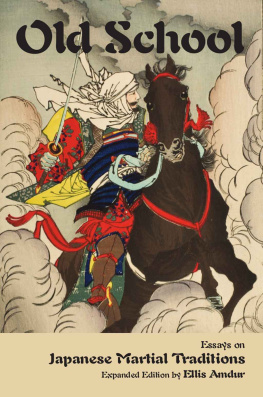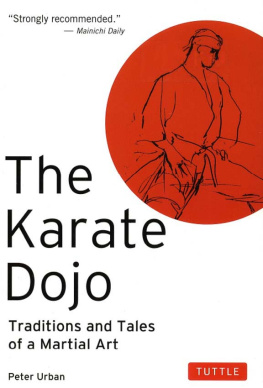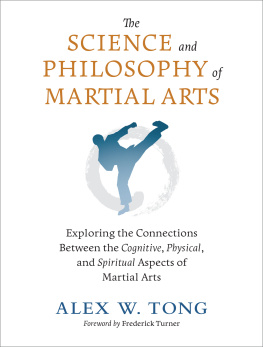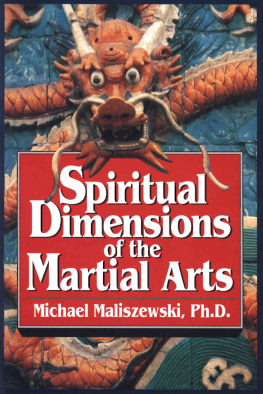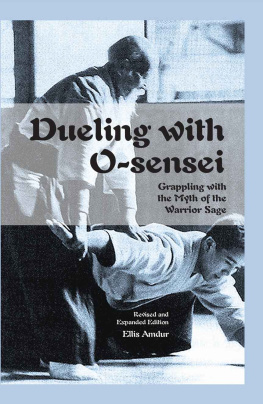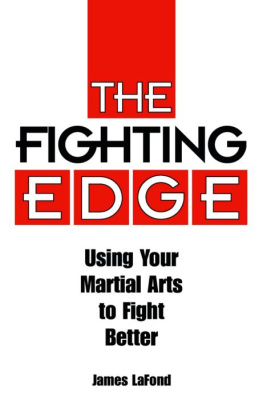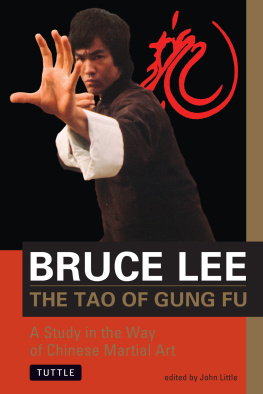Revised, Expanded Edition
Freelance Academy Press
Wheaton, IL 60189
www.freelanceacademypress.com
2018 by Ellis Amdur
Original Edition
Edgework Books
20126 Ballinger Way NE, #85
Shoreline, WA 98155-1117
(206) 781-3588
www.edgeworkbooks.com
2000 by Ellis Amdur
All rights reserved. Published August 2000
No part of this book may be reproduced or used in any form or by any means without prior written permission of the publisher.
Editor:
Greg Mele
Cover design, interior layout & production:
Rebecca Smith
Printed in the United States of America
by Publishers Graphics
109876543210
ISBN: 978-1-937439-37-8
Library of Congress Control Number: 2016951773
In memory of Bob Barrett, my first teacher of Japanese martial artsa man for whom the term stand-up was created.
In memory of Stanley Pranin, groundbreaking scholarhe brought sunlight to the shadow of myth, and remarkable men to a wider world.
Contents
Acknowledgements
I am neither a researcher nor a historian. I simply pay attention, often seeing a larger pattern among small bits of evidence, creating speculations that later research establishes as true. Speculation does not mean to fantasize; it comes from a root word, speculum, which means mirror. To speculate is to hold a mirror up to something so that we can see itat least part of itfrom a different angle.
This book will not, therefore, follow strict academic standards. I credit some people and some sources explicitly, but not all. I have protected some informants privacy because that is what they requested. In other cases, I may have drawn conclusions that I believe my informant may not have intended or agree with, or that might bring undeserved criticism their way. In such circumstances, not quoting them is part of my expression of gratitude.
There are debts, however, that I must acknowledge:
I thank the late Stanley Pranin, who had no idea what I would do with his incredible research once he invited me to begin a blog on the Aikid Journal website. Without Stanley, there would be little information on Dait-ry and aikid in the English language worth speculating about.
I also wish to offer my deepest thanks to Mike Sigman. Mike and I met in the mid-1990s on an internet newsgroup called rec.martial arts, an electronic lacunae, like some backwoods creek where one guy in a canoe says to another, Did you notice that the sounds of the banjos keeps following us? Hey, whats that behind the trees! Its troubling that Mike and I found ourselves so at home. Mike tends to approach things like a sugar-cane cutter hacking his way through an orchid farm, but nonetheless, he had long proposed an idea that there once was a substrate of subtle skills within Japanese martial traditions, similar to those referred to by such terms as internal strength within Chinese martial arts such as taijiquan and xingyiquan. I disagreed, having seen nothing of the kind among the arts I observed and studied in a thirteen year period in Japan, and furthermore, finding most of the claims by aikid, Dait-ry, and other Japanese martial arts practitioners to be either bogus, or dependent on ridiculously compliant partners. However, with his questions provoking me to look at things anew, I began to see traces of what once must have been there, like a shadow that somehow remained on the ground long after the sun had set. I began to consider that it might be possible that such training methodologies still remained extant, like isolated pockets of nearly extinct honeycreepers on the Hawaiian Islands, living jewels almost crowded into extinction by mundane birds imported from the mainland.
Mike, who has trained decades in Chinese martial arts as well as having some past history in Japanese combatives, did me one more significant service. When we finally met, he showed me that his knowledge was not merely academic, and very generously taught me invaluable information of how to train these skills myself. My own research eventually led me to the opinion that teachings on internal strength were once relatively common within Japanese martial traditions, and I felt the weight of years wasted, as this was one of the things Id gone to Japan to find, only to end up disappointed. Although my own skill in this area is still rudimentary, I can now distinguish frauds and poseurs from those who are genuine when I lay hands on them or they on me. Mike has given me an opportunity to learn what I thought long lost, and it has utterly transformed my own training in the martial traditions whose legacy I am responsible.
Furthermore, now that I know where to look, I see it in a number of places, often attenuated, an echo of a voice no longer sung. These skills are rareperhaps they always were, because they require an incredible dedication and intensity of practicebut they can be found when we know where to look.
Deepest thanks also to:
Kuroda Tetsuzan, Dan Harden, and Akuzawa Minoru (and his students in the Aunkai) for allowing me to experience, first hand, powerful versions of internal strength training from within the Japanese martial arts paradigm. Dan, in particular, was also posting on the Internet about internal training in the mid-1990s, insisting that it was at the core of both Dait-ry and aikid. Dan has been open-handed and generous with me: as a sounding board; as a source of vital information based on his training history within Dait-ry, part of an over forty-year history of study in Eastern and Western martial arts; and as someone well-versed in these skills.
Equally deep gratitude goes to Peter Goldsbury, whose breadth of knowledge and academic rigor has provided a challenge of another sort. Whether he believes me right or wrong, Peter demands that I establish what I claim, something I fear that in many areas I may have failed. Nonetheless, my work would have been far more impressionistic without his severity. Subsequent to the publication of the first edition of this book, Peter published an exhaustive critical engagement with the work. Many of the revisions in this edition are a response to his challenge.
Josh Lerner, Liam Keeley, and Jimmy Sorrentino also read through the first edition of this manuscript, Jimmy numerous times, forcing me to question my ideas in a way that others would surely do if they had not gotten there first.
Marnix Wells, Yawata Tom, William Bodiford, Allen Pittman, John Stevens, Takashima Saburo, Robert Mustard, Takatsuka Eichoku, Russ Ebert, Gernot Hassenpflug, Chris Laughrun, Lance Gatling, Steve Delany, Chris Li, and Derek Steel for critical reading of chapters, critical research information both large and small, and/or translations of primary texts.
Shelly Gelfand, Mathew Rogers, and Seakyu for letters that sparked ideas I surely would never have found without their questions.
Wang Shujin, Mrs. Gao Fu, Chris Bates, Su Dong Chen, Bob Galeone and Qian Timing for all too brief periods of instruction in Chinese martial arts.
Tobin Threadgill, Dennis Hooker (too soon departed), Meik Skoss, Nathan Scott, Mark Raugas, Fred Little, and Ken Good for the opportunity to bounce ideas off of people who have something to say.
Allen Pittman, Ivan Bel, Antoine Camilleri, Tim Cartmell, Douglas Walker, Pedro Escudeiro, Mark Murray, Robert van Valkenberg, Budd Yuhasz, Rob John, and Mike Sigman for critical readings and vital information of various parts of the second edition of this book.
To Budd Yuhasz, who collaborated with me experimenting how far one can technically refine modern aikid, without doing violence to its core principles, and the opportunity to work with him in setting up a technical curriculum most congenial to learning internal strength training within that paradigm.


